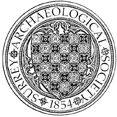Hatchlands Park, East Clandon
Landscape study by H Beamish of OAN, undertaken in 2009, and reported in 2010. Desk and topographical survey identified a wide range of features, many of which could be linked to the early use of the area as farmland prior to the creation of the park in the 19th century. These included ponds, quarries, boundaries and enclosures, a number of which were chosen for more detailed measured survey. Resistivity and magnetometry survey by M and A Roseveare of ArchaeoPhysica was also undertaken in an attempt to locate the remains of a Tudor property known from historic records.


